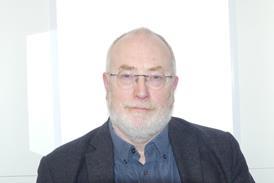The must-read stories and debate in health policy and leadership.
- This week’s wry look at events from Andy Cowper: From ‘croak us’ to ‘crocus’
- Today’s call for a review: Concerns raised over link between CQC ratings and ethnicity
It’s no secret that elective care has been crippled by covid-19. But the sheer volume of delayed procedures will still come as a shock to many. In ophthalmology alone, more than 23,000 patients had been waiting more than a year for treatment in December. A year before, that figure stood at just 40.
Experts say regional collaboration — between both NHS bodies and the private sector — and digital innovation will be key to getting those numbers down. As well as maintaining new service models born of the pandemic, that means bringing in high street optometrists and investing in digital imaging services to both recover and meet rising demand.
If the NHS returns to its traditional ways, one consultant estimated it could take more than two years to clear the backlog — if it’s ever cleared at all.
The bulk of these delayed procedures will be to treat cataracts, which can have a major impact on eyesight even in the early stages. For as long as these surgeries are delayed, patients will be at an increased risk of everything diminished eyesight entails; trips, falls and mental health problems like depression. Although most cataracts remain treatable after many months of waiting, they have a major impact on quality of life in the meantime.
Going the right way, and fast
More cheer for everyone involved in the vaccination programme has come in the latest data from NHS England, showing covid admissions to English hospitals, and the number of covid patients being cared for in them, is falling at the fastest rate yet since the mid-January peak.
The figures show that new admissions are falling at a week-on-week rate of 28 per cent and patient numbers at 25 per cent. Both of these are the highest rates recorded since admissions began falling on 13 January, and patient numbers six days later.
The steepest falls in new admissions are in the South West and London (38 and 35 per cent respectively). However, the greatest acceleration has come in the South East, where the weekly rate of decline increased from 13 per cent on 19 February to 31 per cent on 26 February (the latest data available). The North West also saw a jump of 9 percentage points to 28 per cent and the Midlands one of 12 points to 25 per cent over the same period. Read our full analysis here.
Source Date

























No comments yet